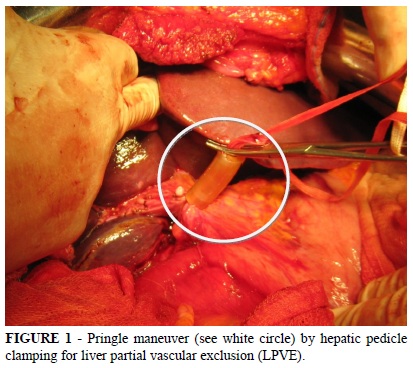PURPOSE: The aim of the present study was to assess the advantages and disadvantages of liver vascular partial exclusion (LVPE) (liver dysfunction due to ischemia) during liver resection in patients submitted to partial hepatectomy. METHODS: A total of 114 patients were submitted to partial hepatectomy (minor versus major resections) with LPVE being used in 57 of them but not in the remaining 57. Patient age ranged from 35 to 73 years and 57 % were women. Mitochondrial function was assessed 30 minutes after liver resection in the remnant liver and serum aminotransferases were determined before surgery and for seven days postoperatively. LPVE time ranged from 30 to 60 minutes. Data were analyzed statistically by the Student T test (5 % level of significance). RESULTS: Mitochondrial function was similar in the minor and major liver resections. The maximum postoperative aminotransferase peak was similar in the groups with and without LPVE. CONCLUSION: LPVE did not induce mitochondrial changes in hepatic tissue in either type of surgery, and aminotransferase levels were similar for patients with and without LPVE. Thus, the results show that LPVE is a safe procedure that does not induce the significant changes typical of ischemia and reperfusion in the liver remnant.
Hepatectomy; Mitochondria; Ischemia




